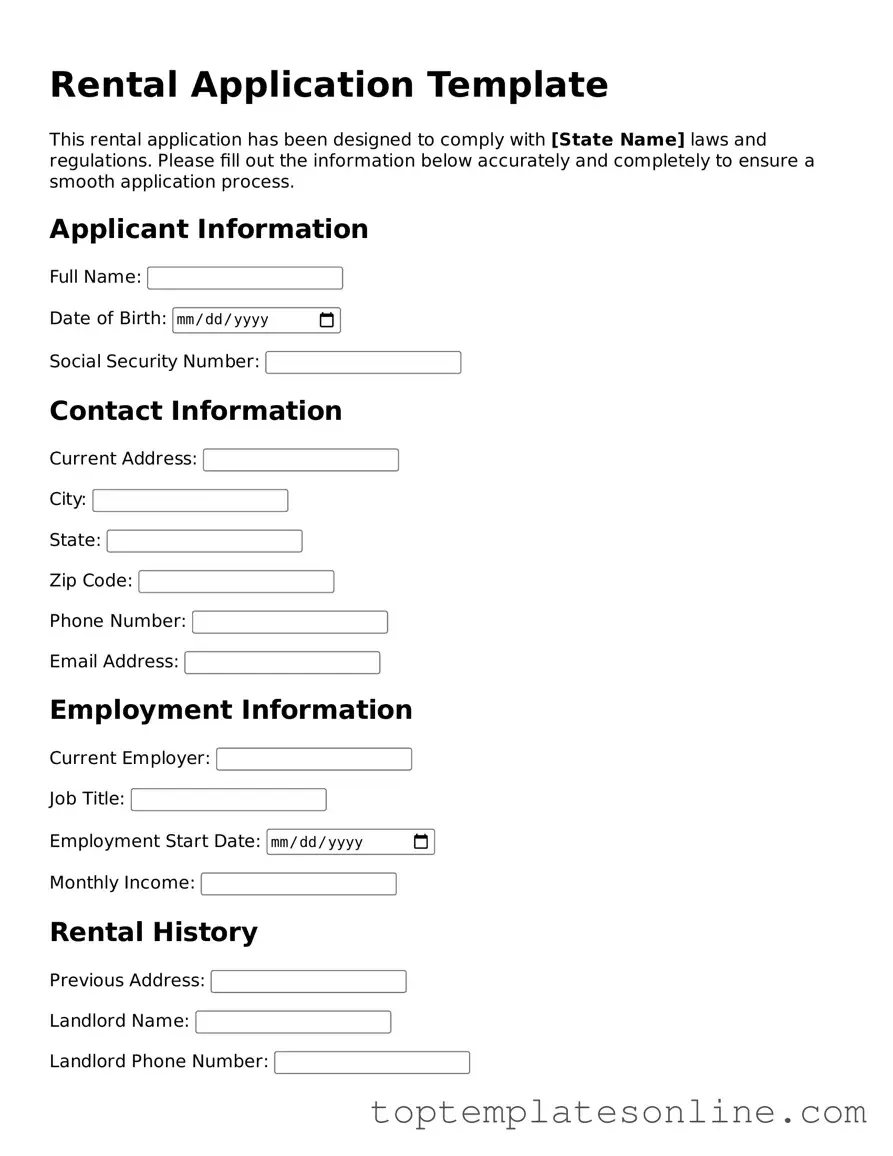When seeking a new place to call home, a Rental Application form serves as a crucial step in the process. This document collects essential information about potential tenants, allowing landlords to assess their suitability for a rental property. Typically, the form requests personal details, such as the applicant's name, contact information, and social security number, which helps verify their identity. Additionally, it often includes questions regarding employment history and income, ensuring that applicants can meet their rental obligations. Furthermore, rental history is usually a focal point, as landlords want to know about previous residences and any prior issues with payments or evictions. Some applications may also require references, both personal and professional, to provide insight into the applicant's character and reliability. Lastly, it is common for the form to include a section for consent to conduct background checks, which can reveal any criminal history or credit issues. Understanding these components can empower applicants to present themselves in the best light, ultimately aiding in the quest for a suitable rental home.
